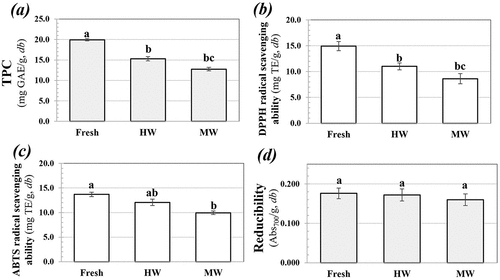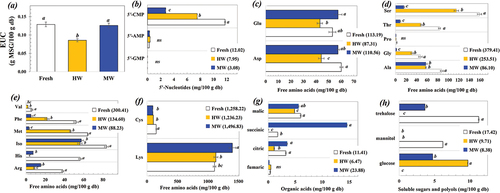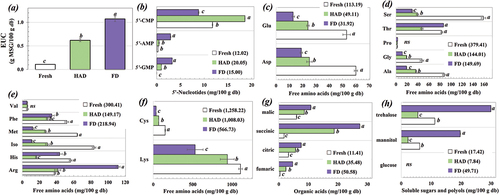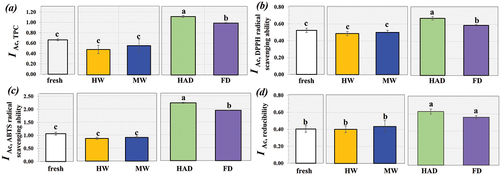Figures & data
Figure 1. (a) TPC, (b) DPPH radical scavenging ability, (c) ABTS radical scavenging ability, and (d) reducibility of S. commune as affected by HW and MW blanching methods.

Table 1. Relative remaining PPO activity of S. commune after blanching.
Figure 2. Effect of blanching on (a) EUC and profiles of taste-related compounds for (b) 5’-nucleotides, (c) free amino acids with umami taste, (d) free amino acids with sweetness, (e) free amino acids with bitterness, (f) tasteless free amino acids, (g) organic acids, and (h) soluble sugars and polyols of S. commune.

Table 2. Effect of HAD and FD on characteristics of S. commune.
Figure 3. Effect of drying on (a) EUC and profiles of taste relating compounds for (b) 5’-nucleotides, (c) free amino acids with umami taste, (d) free amino acids with sweetness, (e) free amino acids with bitterness, (f) tasteless free amino acids, (g) organic acids, and (h) soluble sugars and polyols of S. commune.

Figure 4. Effect of blanching (HW and MW blanching methods) and drying (HAD and FD) on in vitro bioaccessibility of (a) TPC, (b) DPPH radical scavenging activity, (c) ABTS radical scavenging activity and (d) reducibility of the S. commune.

